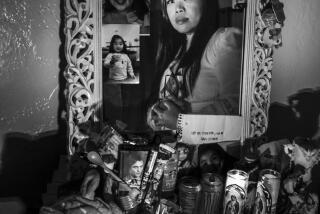Not Just For Kids: ‘Try Not to Breathe’ by Jennifer R. Hubbard
Try Not to Breathe
A Novel
Jennifer R. Hubbard
Viking: 233 pp., $16.99, ages 14 and up
Suicide is the third-leading cause of death for young people ages 10 to 24, claiming 4,400 lives annually, according to theU.S. Centers for Disease Control. That statistic alone is alarming, but at least 149,000 more young people attempt suicide and survive each year. It’s this second statistic that Jennifer R. Hubbard humanizes in her young-adult novel “Try Not to Breathe,” about a teenage boy struggling to find meaning after attempting to take his own life.
The book opens with Ryan standing under a waterfall that “pounded my mind blank … so I couldn’t think,” he writes in a story told from his perspective. Ryan, 16, knows the waterfall is dangerous. Someone had died there doing the same thing not too long ago, yet Ryan prefers the numbness that comes from risk-taking to the pain and self-doubt of personal interaction — most of all with girls. He’s been teased by crushes for staring at them and taken advantage of by others.
So when a girl he recognizes from high school starts showing up at the waterfall intent on getting to know him, Ryan is leery. It would be so much easier to stay detached and uninvolved, yet Ryan cautiously accepts Nicki because “she didn’t choose every word as if she had to wrap it in tissue paper before she gave it to me,” like everyone else since his suicide attempt. His parents in particular are claustrophobic and distrusting, and they keep his anti-depressants locked in a cabinet and administer them each morning, checking his mouth to make sure he’s swallowed.
Writing about a suicidal character is tricky. He can’t be presented as so much of a downer that readers dismiss him as overly depressing, yet he must also seem real and relatable. Hubbard has succeeded in making Ryan an average, everyday high schooler whose depression seems to have sprung from nowhere. He came from a well-to-do family with loving parents, so why was he so miserable? Hubbard does a terrific job of slowly teasing out Ryan’s reasons for wanting to take his own life, which to adult readers might seem insignificant but to teens will likely resonate.
Ryan’s mother is an overprotective perfectionist. His dad is often away on business. He recently moved to a new school and hasn’t made any real friends. Then he got sick with mono, forcing him to give up baseball and running — anything that gave him a reason to wake up in the morning and face another day.
Ryan exhibits several personality traits of the suicidally inclined. He’s hypersensitive and cares too much about what others think. He hates himself for wanting attention, describing himself as “a sniveling ball of need” who’d spent his entire life “wanting and not asking. Wanting and not doing. Holding back.” He’d rather be alone than risk intimacy and possible rejection.
But all that changed with Nicki, a wise-beyond-her-years but damaged 15-year-old whose father committed suicide. Ryan, she thinks, will be able to provide clues to her dad’s motivations. It’s a great pairing because Nicki is relentless in her pursuit of answers, and Ryan is so reluctant to be her so-called suicide guru. He’s talked about his attempt only twice — once to the emergency room staff and another time in group therapy at the mental hospital after “I’d grown a shell around that day and didn’t want to look inside it.”
This friendship, born from suicide’s unanswered questions, blossoms into a romance that forces Ryan to deal with his biggest secrets and, as a result, begin to heal. Nicki, however, isn’t exactly the person she’s presented herself to be, which serves as a sort of test of Ryan’s recovery.
“There was never a magic moment when I knew why dying had called to me, just like there was never a magic moment when I decided I wanted to live instead,” Ryan explains, speaking truth to the difficulty in predicting or identifying depression.
The road to recovery from such a debilitating and self-sacrificing worldview is multifaceted, requiring depressed individuals to accept life’s ups and downs and cultivate the faith and vulnerability required to negotiate its inevitable uncertainties. “Try Not to Breathe” is a compelling and compassionate look into the motivations and rationales of teen suicide and the aftermath when it fails.
More to Read
The biggest entertainment stories
Get our big stories about Hollywood, film, television, music, arts, culture and more right in your inbox as soon as they publish.
You may occasionally receive promotional content from the Los Angeles Times.










